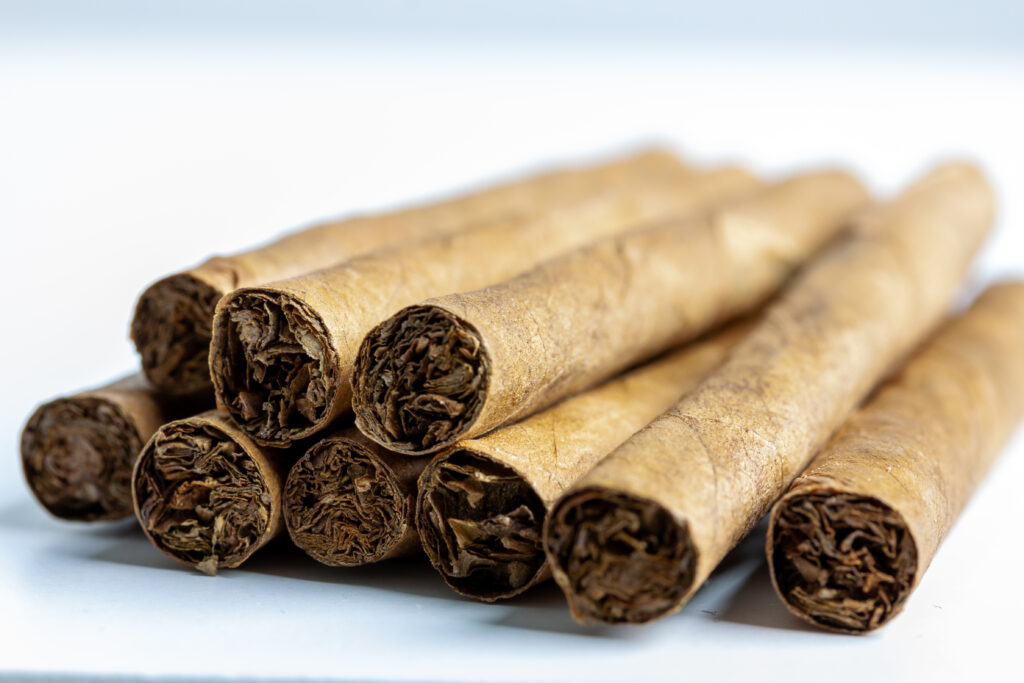Anatomy of the Premium Cigar

Understanding the anatomy of a premium cigar is essential for any true aficionado. Whether you enjoy Montecristo cigars or King Edward cigars, knowing the fundamental components can enhance your appreciation and smoking experience. Let’s delve into the three key elements: filler, binder, and wrapper.
Three Key Elements of Premium Cigars
Going down to the most basic elements of a cigar is not only mandatory knowledge if we intend to proclaim ourselves true cigar fans, but, personally, it helps us understand more clearly the functioning of this unique organism and, perhaps more importantly, it brings us closer to the causes of why some premium cigars, such as Montecristo cigars and King Edward cigars, are better than others from an anatomical point of view, which will undoubtedly also influence their overall quality.
No matter how hackneyed it may be, in this section, it is a good idea to start with that phrase “as Jack the Ripper said, let’s go in parts.”
1. Filler:
It refers to the interior, the content with which the cigars are formes and constitutes the body. The cigar can be long filler, when whole, hand-tie leaves are used; or it can be short filler, when its interior is compose of fragments of broken leaves or small pieces of them (pitting). Only cigars that are construct with full leaves and manually fall into the Premium category. Good combustion in the filler leaves is essential to achieve a pleasant smoking experience. It is in the filler where the master blender can be more creative and use different tobaccos, both plant varieties and geographical origins. It is here where the main flavour is print and where the strength and complexity are mould.
2. Binder:
It is the tobacco leaf that wraps the filler and holds it together, so it must be resistant, as well as consistent in type (flavour and aroma) with the tobacco used for the interior. It does not need to have a uniform appearance since it is not a leaf that we will see, it is just the support of the leaves that make up the gut.
3. Wrapper:
The tobacco leaf put in the most superficial and visible part of the cigar is the most expensive to produce. As they are brew separately to produce a thin, smooth, and finely veined leaf. It is usually the darling of cigarette manufacturers, since it is their letter of introduction to consumers. So imperfections are not tolerate here. The first impression that the fan makes depends largely on it. Which is why the leaves of the highest quality and beauty are reserve for it based on their softness, elasticity, and colour.
However, its function is not merely aesthetic, because like all the elements of the cigar it also contributes to its flavour (which affects it by around 10%, according to the majority opinion of experts). The task of placing it is reserve for the roller, a true master craftsman in the making of a great cigar.
Key Components of a Cigar
HEAD. Upper third of the cigar through which the end is inhaled when it is lit.
BODY. Middle third of the cigar where we hold it.
FOOT. Lower third of the cigar where it is lit at the end to be able to smoke it.
CALIBER. Caliber (also, a ring gauge) means measurement of the diameter of a cigar. It is measured in 1/64 of an inch (1 inch = 25 mm).
KNOB. It is the rounded part of the cigar where the cut is made to smoke it.
NOZZLE. It is the part of the cigar through which you light it to smoke it.
RING. Ring or Vitola, is a printed paper strip that is placed on the cigar to identify the brand.
With all these elements playing in the same team, it is understood how good construction is key and should never be left out in the final evaluation of a cigar. If these elements are not properly arrange, the tobacco will not burn properly, which will drastically affect its flavour and therefore the level of enjoyment, no matter how good the raw materials used are, whether in Montecristo cigars, King Edward cigars, or any other brand.
Frequently Asked Questions (FAQs)
1. What are the three key components of a premium cigar?
A. The three key components are the filler, which provides the main flavour and strength, the binder, which holds the filler together, and the wrapper, which gives the cigar its appearance and contributes to its flavour.
2. How does the filler affect the flavour and strength of a cigar?
A. The filler, made from whole leaves, defines the cigar’s primary flavour, strength, and complexity. It allows for creativity with different tobacco types and origins.
3. Is Wrapper the most expensive part of the cigar?
A. The wrapper is costly due to its separate fermentation process, ensuring it is aesthetically perfect and smooth, contributing significantly to the cigar’s appearance and about 10% to its flavour.
4. What is the purpose of the binder in a cigar?
A. The binder wraps the filler and holds it together, providing structural integrity. It supports the internal leaves and influences the cigar’s flavor and aroma.
5. How to measure the the caliber of a cigar and what does it indicate?
A. The caliber, measured in 1/64 of an inch, indicates the cigar’s diameter. It affects the smoking experience, with a larger gauge offering a slower burn and more complex flavours.
6. What is the function of the cigar ring, and what is it commonly known?
A. The cigar ring, or vitola, identifies the brand and adds to the cigar’s presentation. It helps distinguish the cigar’s origin and quality.
